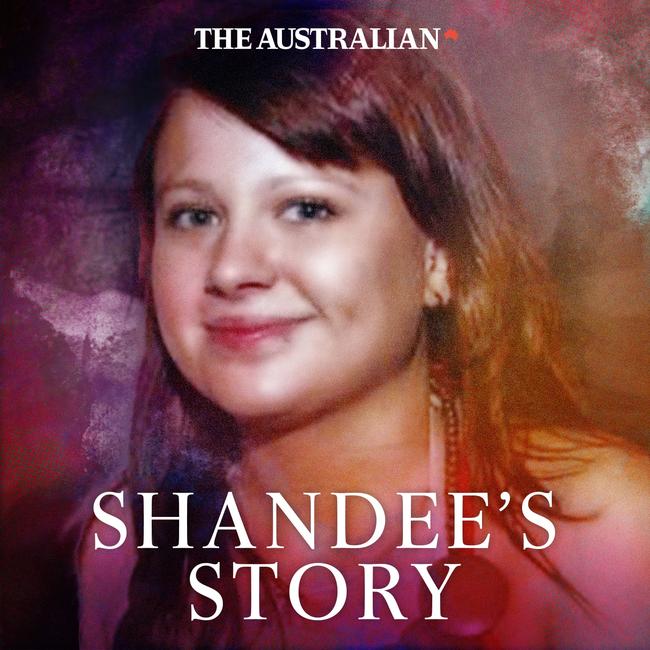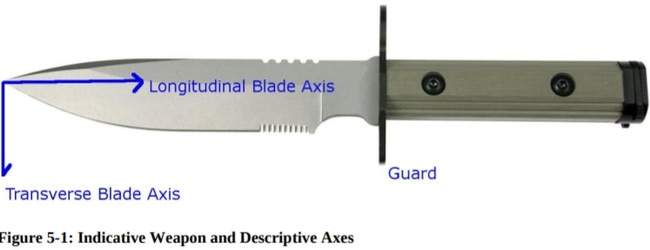Wounds pattern show Shandee Blackburn ‘knew her attacker’
Knife wounds to her face suggest Shandee Blackburn was more likely to have been killed by someone she knew, an expert found.

A young woman murdered as she walked home from work was more likely to have been killed by someone she knew than a stranger because of knife wounds to her face, an expert report says.
Biomechanics engineer Zachariah Couper’s 57-page report on the murder of Shandee Blackburn in Mackay in 2013 supports the view of investigating officers that the ferocity of the attack and targeting of her face and head appeared personal.

“Based on statistics associated with wound cluster locations, the assailant is much more likely to have been an intimate partner or family as opposed to a stranger,” Dr Couper concluded.
He cited a study called Injury Patterns of Sharp Instrument Homicides in Hong Kong, published in the Forensic Science International journal two years before Blackburn’s murder.
The study drew on data including detailed autopsy findings from 141 solved murders involving sharp instruments over a 10-year period.
“Intimate partners attack the upper part of the body more when compared with strangers,” the study concludes.
“The findings also verified the belief that in homicides caused by sharp weapons, a victim with a closer relationship with the offender tends to have injuries in the head, face and neck.”
Hired by police, Dr Couper used his expertise to detail how he believed the attack unfolded, building 3D models to try to replicate and sequence the knife lunges.

“The majority of the wounds appear to have been directed towards the head,” his report states.
Wounds to the chest appeared to have been delivered unopposed, suggesting Blackburn was at that point concussed or unresponsive.
“The simplest explanation is the victim was on their back while the assailant delivered the stab wounds overhand whilst positioned on the victim’s left side,” the report states.
“The lack of stab wounds to the victim’s right arm – in conjunction with restraint bruising on the right hand – suggest the assailant has grasped and restrained the right hand until the victim was no longer capable of defending herself, potentially up until the blows to the top of the head.
“The attack progression is suggested to be composed of at least two clearly defined stages, one preceding the other – attacks to the left hand and head leading to concussion, followed by attacks to the chest.”
The report was included in the brief of evidence for the prosecution of Blackburn’s former boyfriend John Peros for the murder.

Dr Couper gave evidence at Mr Peros’s committal hearing, saying a person should be able to deliver 20 blows in a little over 10 seconds.
He wasn’t called to appear at the trial, and the jury heard none of his expert opinions, for reasons that are unknown.
A jury acquitted Mr Peros in less than two hours. He denies any involvement.
Former homicide detective Scott Furlong has said the attack appeared to him and other detectives to be “quite personal and very angry”.
“There was a lot of animosity in that attack,” he said. “It seemed quite vicious. There seemed to be quite some venom attached to it.”
The report can be revealed as the Queensland government faces mounting calls for an inquiry into the state’s forensics laboratory over major errors and problems in the unsolved case.
DNA expert Kirsty Wright identified the forensics failures during investigations for the Shandee’s Story podcast series with The Australian’s Hedley Thomas, and has said hundreds of other cases could be affected.
Mackay-based Nationals MP George Christensen on Monday raised the forensics crisis in federal parliament, saying Blackburn’s murder was a “horrific crime that rocked the community”.

“One of this country’s most respected forensic scientists, Dr Kirsty Wright, has looked into the case and has grave concerns,” he said. “She has said and I quote, ’We need a public inquiry because I don’t believe the police or the courts can trust any of the DNA results coming out of this lab’.
“Dr Wright also said ‘This has the potential to be the biggest forensic disaster in Australia’s history’, yet the Queensland Health Minister has refused to consider an inquiry or retesting of evidence.
“The family of Shandee Blackburn have called that response a disgrace and they deserve better. I call on the Queensland government to take action immediately.”
Premier Annastacia Palaszczuk, Attorney-General Shannon Fentiman and Police Minister Mark Ryan have been silent on the unsolved murder of 23-year-old Blackburn and the problems and errors in the lab.
Anyone with information about the murder of Shandee Blackburn can contact Hedley Thomas at shandee@theaustralian.com.au



